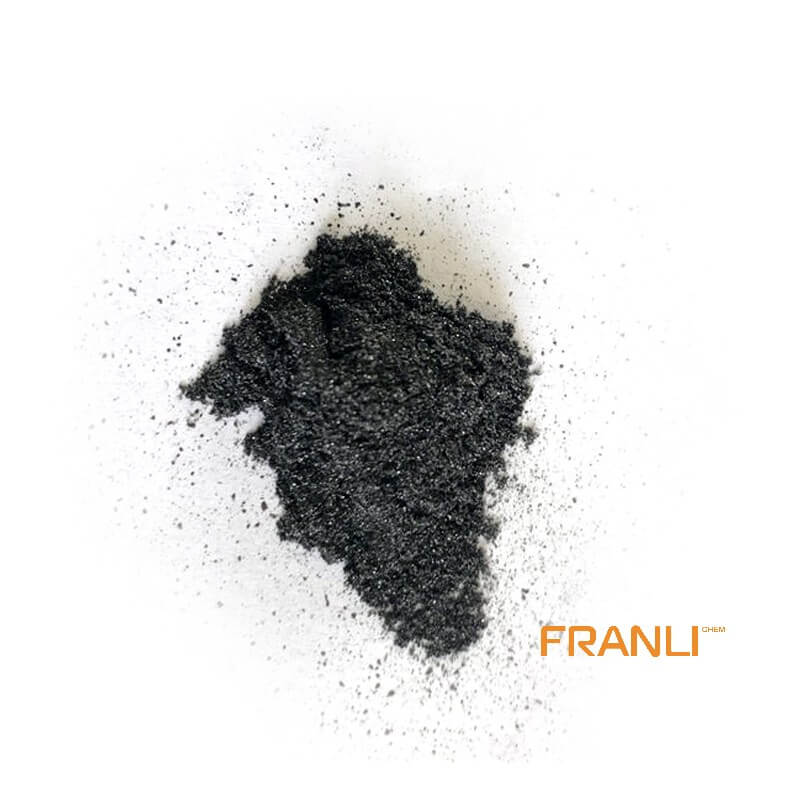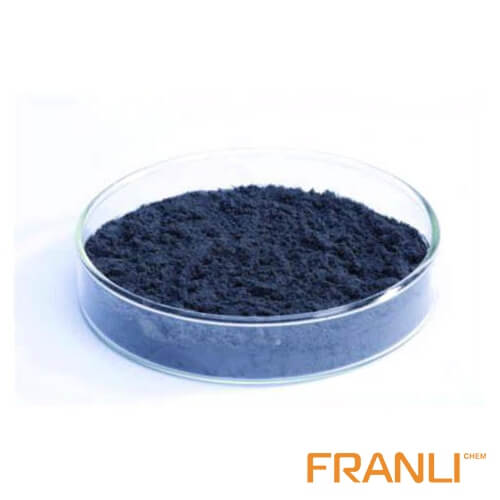


Expandable Graphite
Size
0.50mm or 0.106mm, etc
Package
25 kg small bags into ton bags
Origin
China
Features
Preservative/Electrical and thermal conductivity, etc.
Application
Fireproof sealing element, flame retardant, refractory brick, etc.
Expandable graphite crystal is a typical layered carbon material. Other heterogeneous particles such as atoms, molecules, ions, and even atomic clusters are inserted into the interlayer of crystalline graphite by physical or chemical methods to form a new layered compound, which is called graphite interlayer compound, namely expandable graphite.
Request a quote
Expandable graphite means that under appropriate conditions, acids, alkali metals, salts, and other chemical substances can be inserted into graphite layers and combined with carbon atoms to form a new chemical phase – Graphite Intercalation on compounds (GIC). This graphite intercalation compound is expandable graphite. When the interlayer compound is heated to an appropriate temperature, it can decompose rapidly and produce a large amount of gas, which makes the graphite expand into a worm-like new material along the axial direction, that is, expanded graphite.

Expandable graphite can expand rapidly when heated at high temperatures, with expansion times as high as tens to hundreds or even thousands of times. The apparent volume of expanded graphite reaches 250 ~ 300ml / g or more. The expanded graphite presents worm shape, with a size of 0. a few millimeters to a few millimeters. It has a large number of unique network microporous structures inside, which is called expanded graphite or graphite worm. In addition to the excellent properties of natural graphite such as cold and heat resistance, corrosion resistance, and self-lubrication, expanded graphite also has the characteristics of softness, compression resilience, adsorption, ecological environment coordination, biocompatibility, and radiation resistance than natural graphite does not have.
As graphite is a non-polar material, it is difficult to intercalate with organic or inorganic acids with small polarity, so oxidants must be used generally. The chemical oxidation method generally immerses the natural flake graphite in the solution of oxidant and intercalator. Under the action of a strong oxidant, the graphite is oxidized to turn the neutral network planar macromolecules of the graphite layer into positively charged planar macromolecules. Due to the repulsion of isotropic positive charges between the planar macromolecules with positive charges, the distance between graphite layers increases, Intercalating agent is inserted between graphite layers to form expandable graphite.

Chemical oxidation method: chemical oxidation method is a traditional method for preparing expandable graphite. In this method, natural flake graphite is evenly mixed with an appropriate amount of oxidant and intercalation agent, controlled at a certain temperature, continuously stirred, washed, filtered, and dried to obtain expandable graphite. There are many kinds of oxidants, The oxidants commonly used are solid oxidants (such as potassium permanganate, potassium dichromate, chromium trioxide, potassium chlorate, etc.) or some liquid oxidants with oxidizing properties (such as hydrogen peroxide, nitric acid, etc.). In recent years, it has been found that potassium permanganate is the main oxidant commonly used to prepare expandable graphite. Most intercalators are acid. In recent years, researchers have mainly focused on sulfuric acid, nitric acid, phosphoric acid, perchloric acid, mixed acid, and glacial acetic acid.
Electrochemical method: electrochemical method takes the aqueous solution of the insert as the electrolyte under constant current, Graphite and metal materials (stainless steel, platinum plate, lead plate, titanium plate, etc.) form a composite anode, and insert metal materials into the electrolyte as cathodes to form a closed circuit; or suspend graphite in the electrolyte, insert cathode and anode plates in the electrolyte at the same time, and conduct anodic oxidation by energizing the two electrodes. In recent years, an electrochemical method has gradually become a popular enterprise with many advantages It is the preferred method for preparing expandable graphite.



